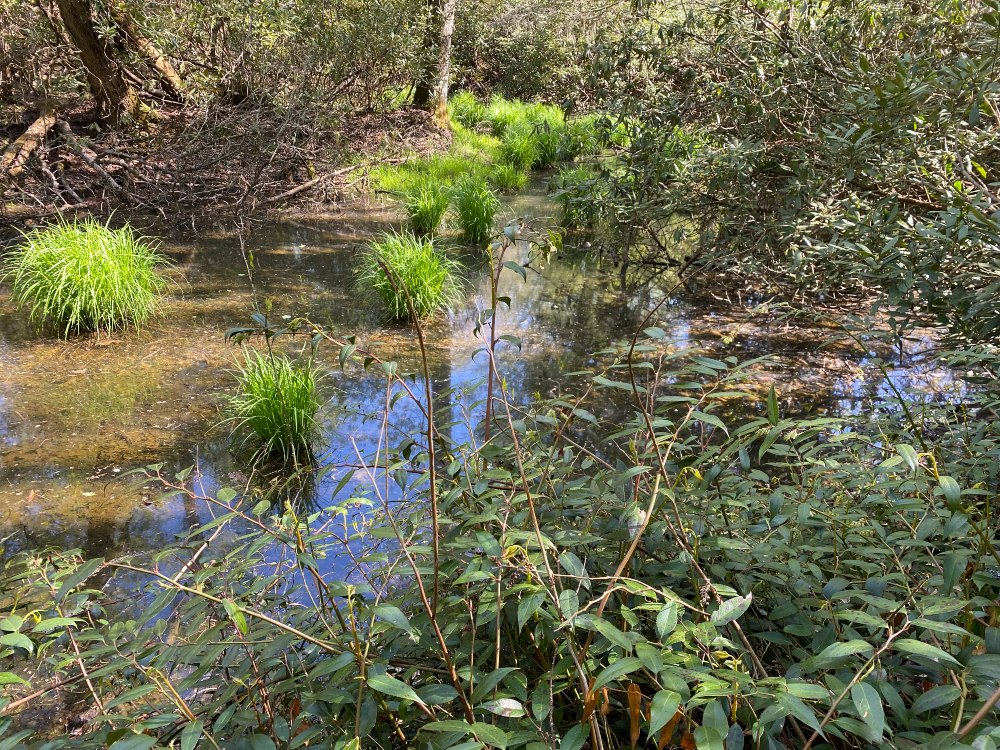Woods and Water
Discover a newly protected wetland along the Little River.
Cross a rickety wooden bridge over the Little River, in Transylvania County, and you’ll sense that there’s something different about these woods.
It’s the hummocky ground—the plants growing in raised clumps above soil that is sometimes drenched. It’s the rich carpet of spiky club moss, the ferns, the running cedar. You’ll see sphagnum moss, a sponge of a plant that can live with totally wet feet. You’ll see native irises, at home in a basin that sometimes fills with floodwater.
Then there are the oxbows. These curving, still pools are shaped like little pieces of river—which is what they are. They’re part of a past riverbed, left behind when the Little shifted course.
In April, in one of these oxbows, Conserving Carolina’s staff found egg masses from marbled salamanders, wood frogs, and spring peepers. On a trip back in early May, our Stewardship Manager, Torry Nergart, said that the dark water must be full of their wiggling larvae.
What is it that makes this woodland so different?
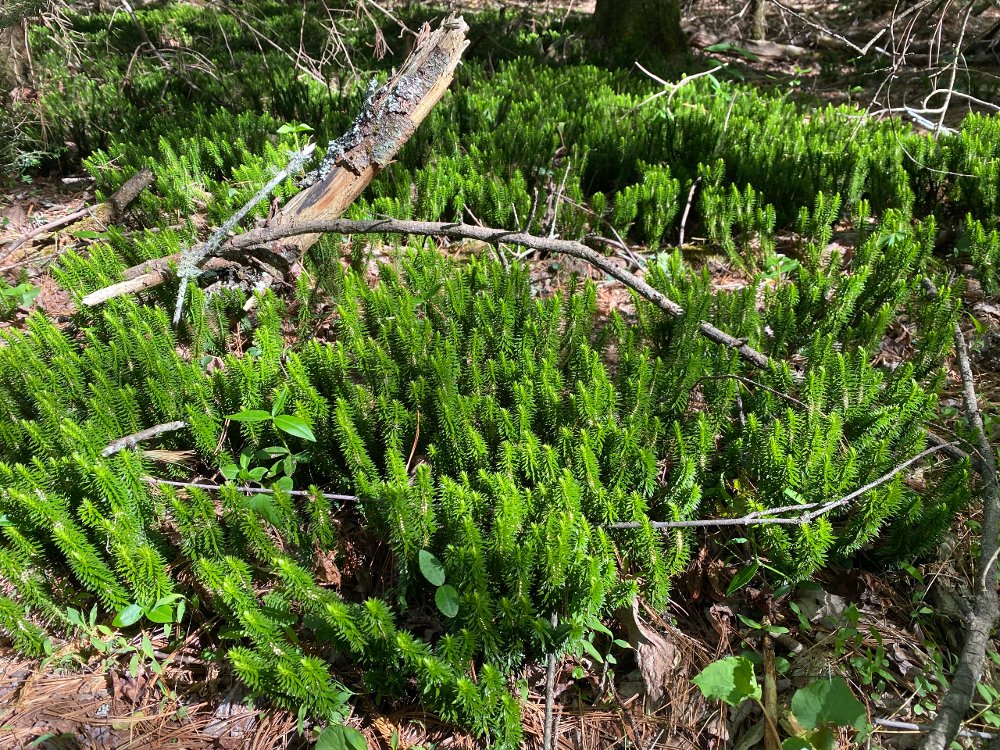
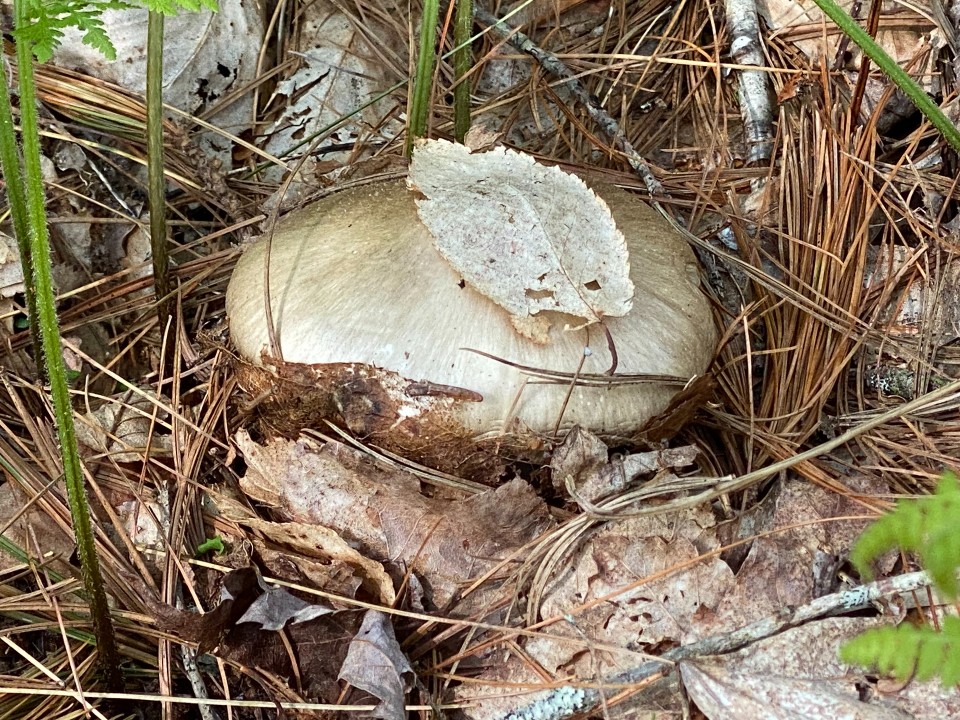
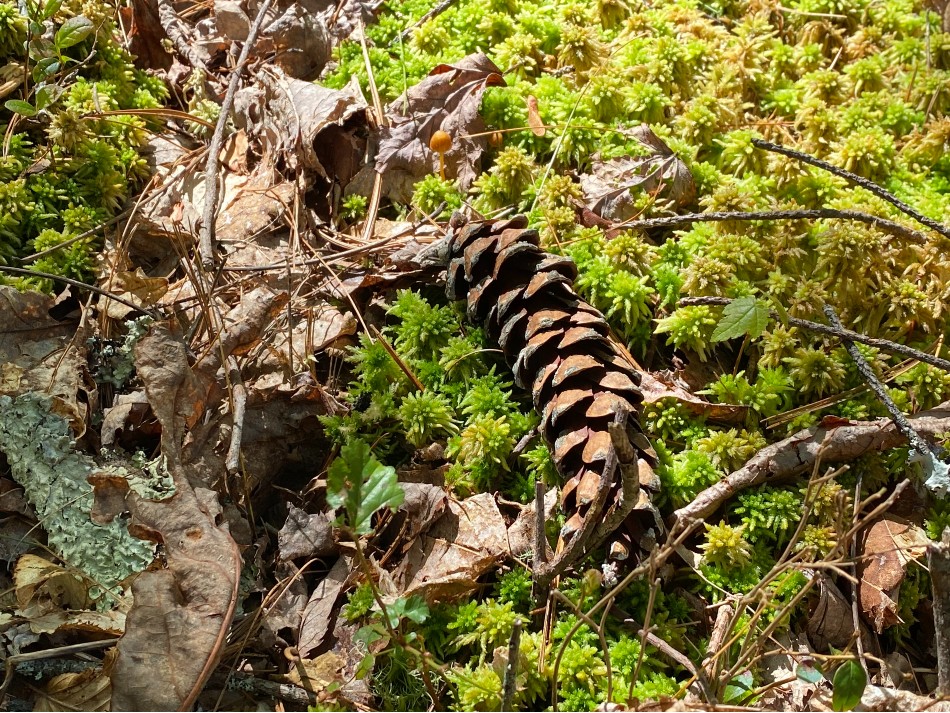
When the River Can Do What It Wants
Torry explains, “This is what happens when a river is allowed to do what it wants to do. The land is receiving floodwater, it’s slowing down floodwater, it’s soaking it in. That’s the function of a natural floodplain. It leads to all these little hummocky low spots and high spots and bedrock spots and soft sand spots. It’s all about a microdiversity of terrain that allows that water to find a place to be rather than shooting straight down the middle of the channel and taking all the sediment with it.”
Throughout our region, people have drained floodplains—sending all the water into a channelized river. As an unintended consequence, we have worse floods, worse erosion, and worse water quality.
But, in this recently protected place that we call Little River Wetlands, you can see a river in its natural relationship with the land.
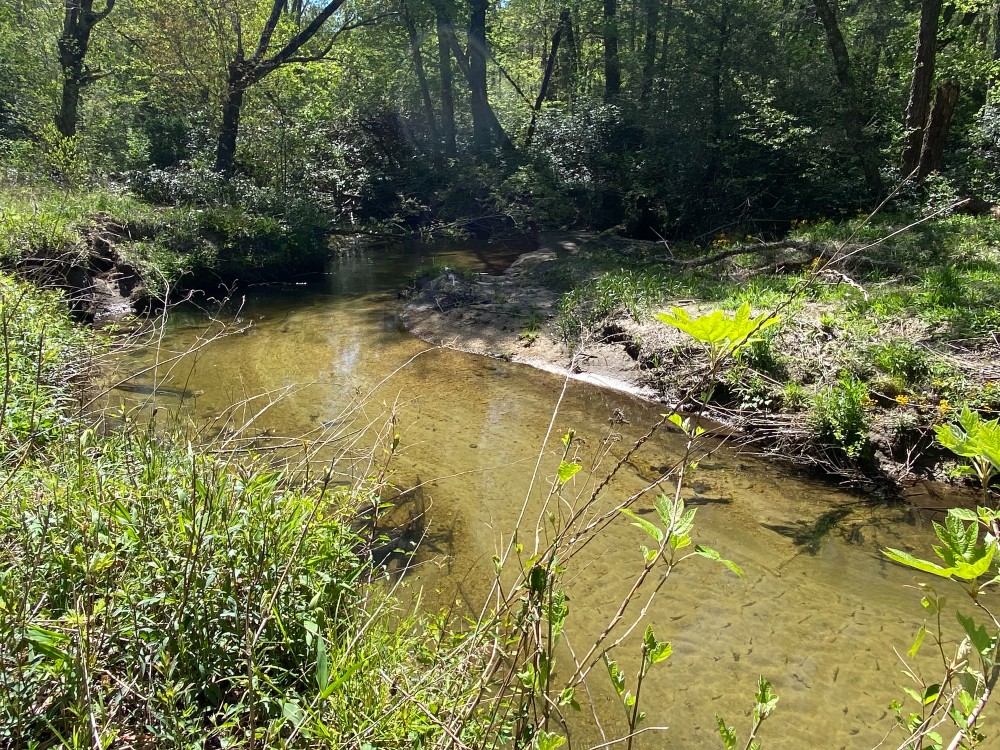
Torry says, “We just don’t have a lot of wetlands at all because of the draining, ditching, diking, and filling. This is relatively intact, forested, riverine wetland. This wetland is connected to its main channel and that allows the river to wiggle a little bit. It’s not so rigid, stuck in its channel. It can flex and grow and swell as it sees fit.”
In some ways, the Little River Wetlands are similar to the natural floodplains that Conserving Carolina is restoring along the Upper French Broad River, at sites like Mud Creek, King’s Bridge, and the in-progress Pleasant Grove restoration. At Little River Wetlands, we don’t have to recreate a natural floodplain, because it’s already there.

Buffering a Rare Mountain Bog
These wetlands are also valuable because they’re located near an Appalachian mountain bog (a specific and rare type of wetland.) Little River Wetlands helps to shelter the ecological treasure of the bog from impacts like polluted runoff and invasive plants. Torry also thinks that Little River Wetlands may have enough of the characteristics of a mountain bog that the bog community could potentially expand here.
The 27-acre Little River Wetlands is adjacent to an 83-acre property protected by Conserving Carolina in 2021, which is slated to become part of the Appalachian Mountain Bogs National Wildlife Refuge. While most wildlife refuges cover vast, contiguous areas of habitat, this unique refuge, founded in 2015, is made up of a patchwork of the remnants of our mountain bogs.
Appalachian mountain bogs would have once covered around 5,000 acres. But today there are less than 500 acres left! Today, many of the special plants and animals that live in mountain bogs—like carnivorous pitcher plants and tiny bog turtles—are vanishingly rare, making them high priorities for conservation.

What Would Happen If It Wasn’t Protected?
Conserving Carolina purchased the Little River Wetlands in February with the help of some exceptionally generous donors. Jeff and Elizabeth Jennings, Ted and Karen Ramsaur, Gus and Margaret Napier, and Fred and Alice Stanback donated the funding needed to match a grant from the NC Land and Water Fund, which allowed us to purchase the land.
On a sunny morning in early May, the Jennings and the Ramsaurs joined some of Conserving Carolina’s staff for a tour of the wetlands.
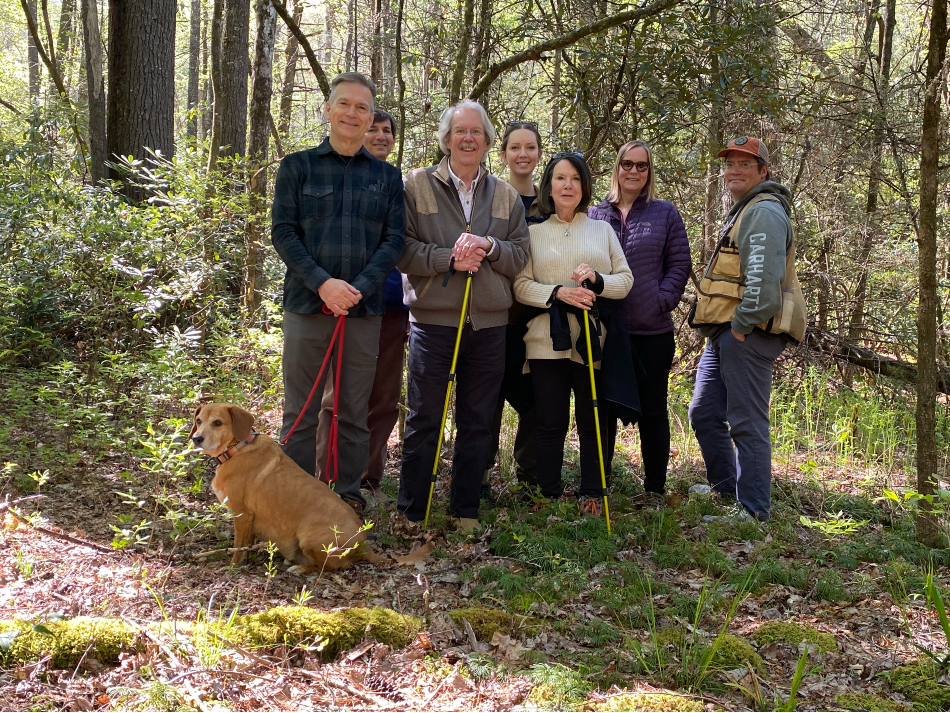
Our Land Protection Director, Tom Fanslow, asked the group to imagine what might have happened if the land wasn’t protected. It’s true that the riverside land probably wouldn’t have been developed, because it’s in the floodplain. But it has been logged before and could be logged again. Or, Tom asked, “What if somebody decided to ‘clean up’? Sometimes landowners want to clean up because it looks messy.”
It’s easy to imagine how someone might clear out the logs and snags, get rid of the mucky pools, and make themselves a nice, grassy clearing by the river. “Thanks for keeping this place messy,” Tom told the donors.
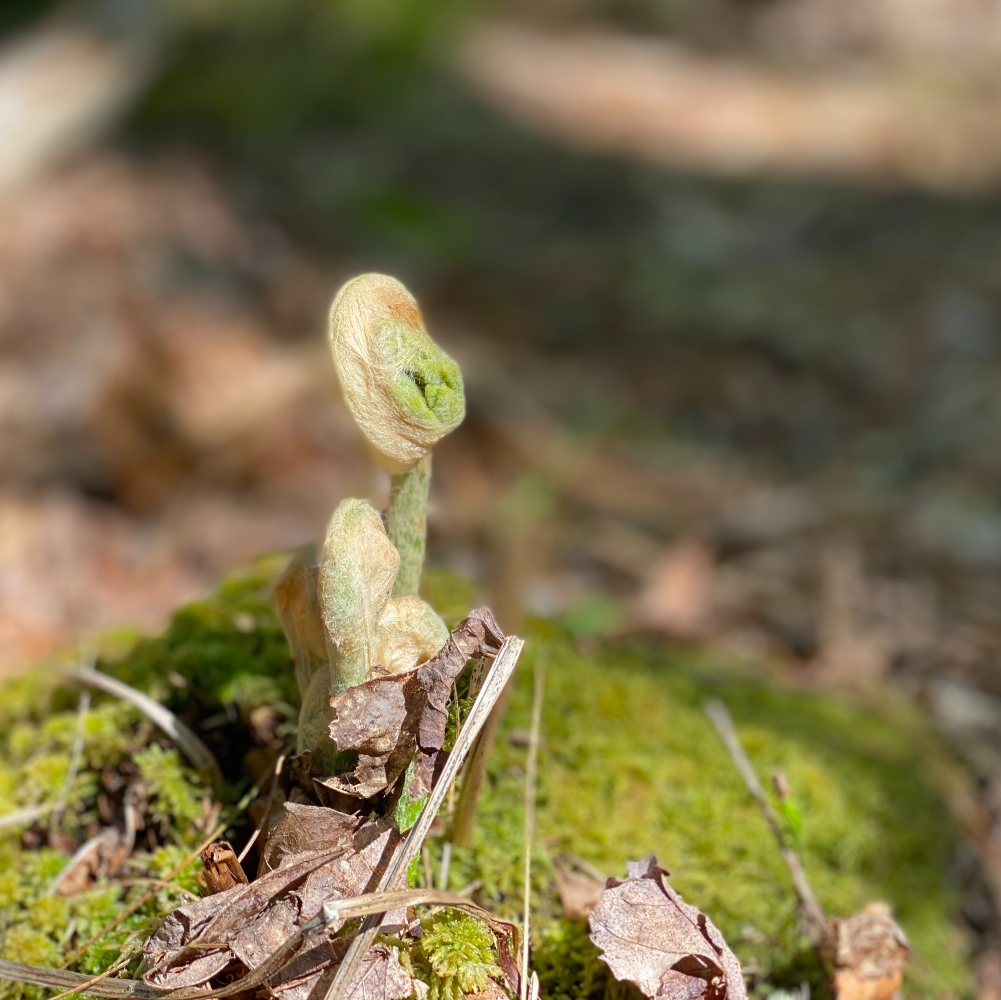
When asked why they donated to protect this land, Ted Ramsaur said, “Well, I think you just saw it.” This special place of woods and water speaks for itself.
His wife Karen added, “I think it’s our duty to try to protect as much as we can. It’s obviously a special area and if we can help maintain it as it is, we want to do that.”
Elizabeth Jennings said that for her, “The rareness of the habitat is a big factor.”
Her husband, Jeff, said that the connection to other protected land is important as well. “It’s really an opportunity to keep some of these landscape ecosystems more intact.”
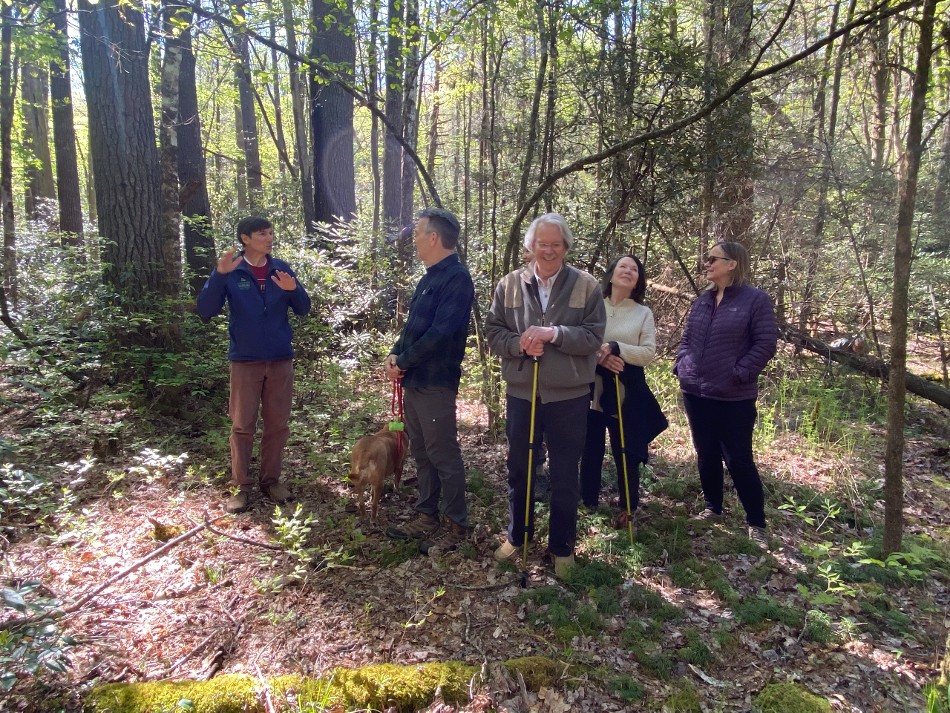
The Salamander Hunt
In an outing organized by a new member of our team, Planned Giving Officer Sierra Hoisington, the group explored the verdant floodplain and found wildflowers like Jack-in-the-Pulpit. Torry pointed out how the flaking bark on the snags (or standing dead trees) offers attractive hideaways for bats. Then, some folks took a short but steep hike uphill, where boulders jut out from the bank—boulders with just the right kind of cracks for salamanders. And the search was on.
While aquatic salamanders are happy to splash around in the river and wetlands below, other salamanders like the high ground. Some—like the rare green salamander—spend part of their life cycle tucked away in rocky crevices and part of their life high in the treetops. Our stewardship staff thought these boulders looked right for green salamanders but they hadn’t found any in the few months since Conserving Carolina bought the land.

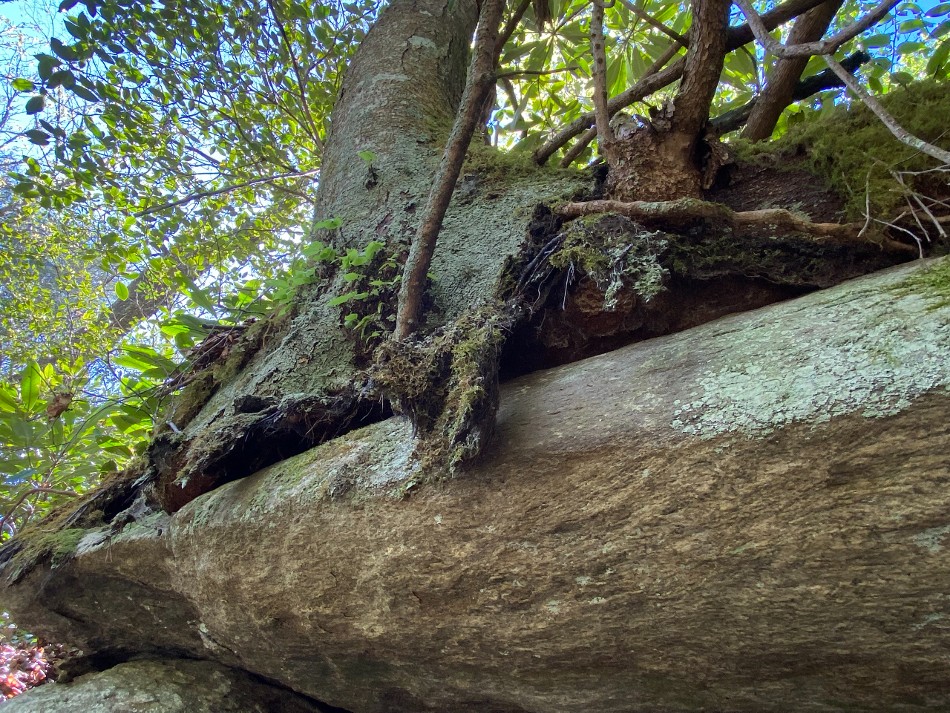
Torry brought out a small flashlight so the group could search for tiny creatures hiding in the dark. They saw some telltale glistening. In one case, it turned out to be a gray cheeked salamander. Then Torry got a glimpse of green spotted skin! To document the rare find, he eased the quick, wriggling green salamander out of its crevice for a picture.
The salamander probably was relieved to find itself returned to its crack and not eaten by the apparent predator. Torry said, “It’s just living its salamander life and this UFO comes in and pokes it and takes a picture and leaves!” The bright spotted creature went back to living in its forest.
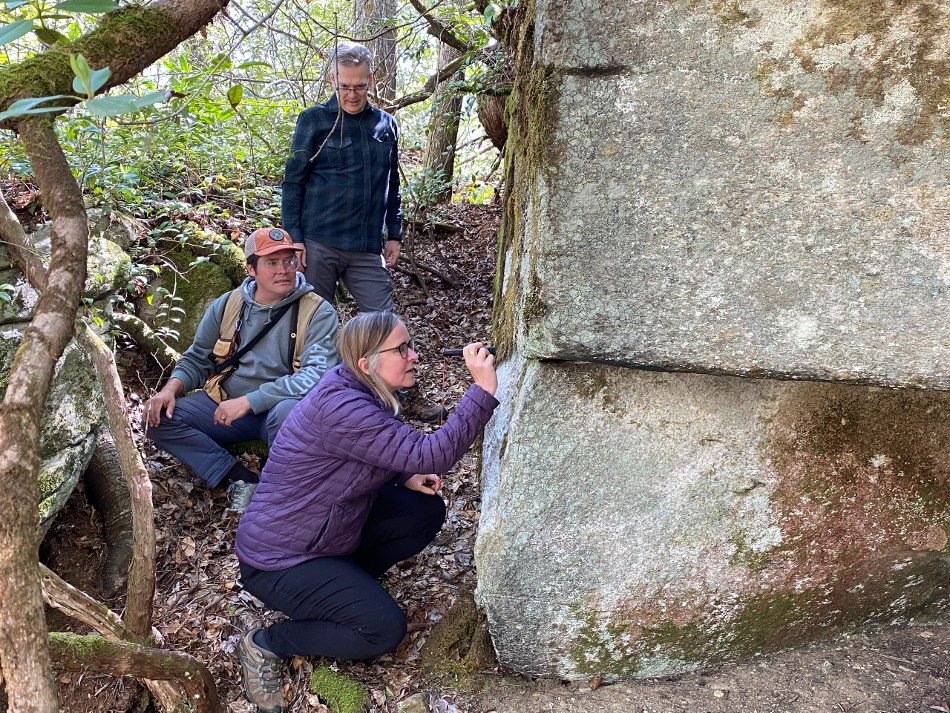
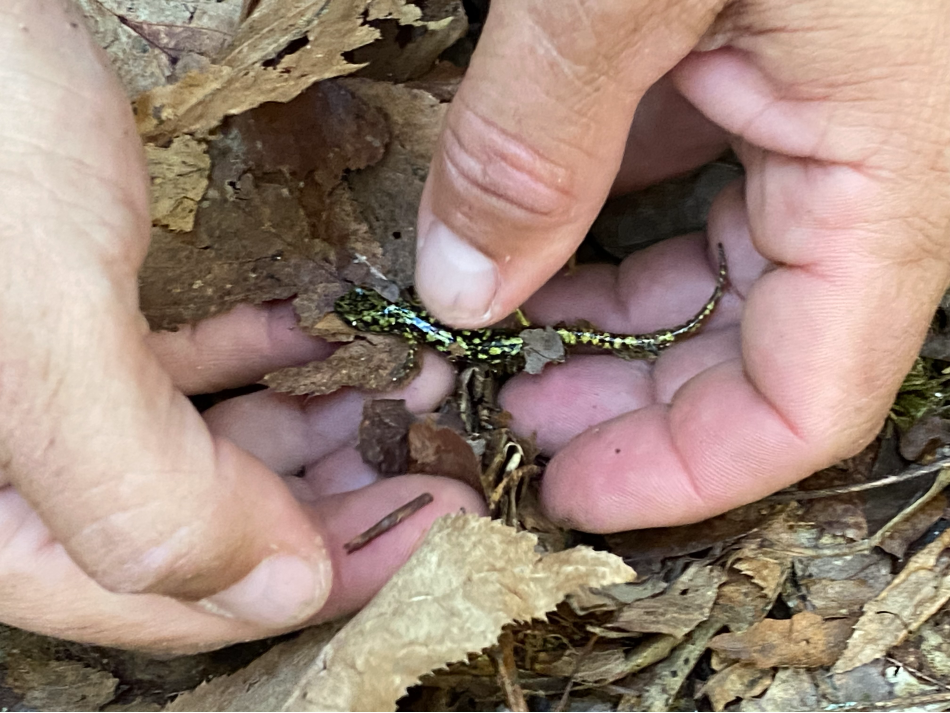
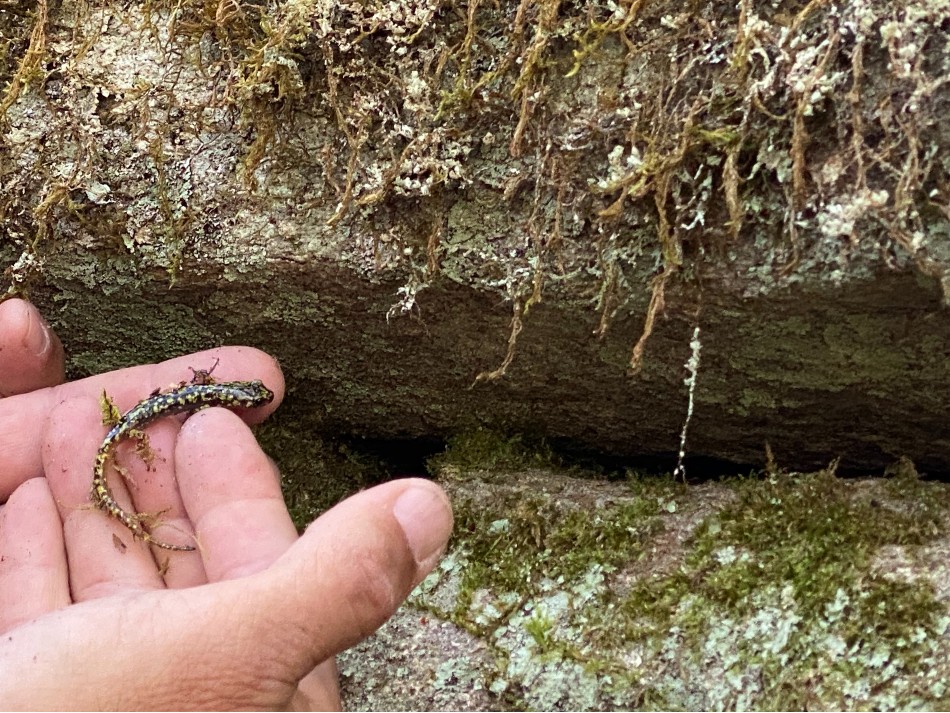
Will you help us protect special places?
If you are interested in making a contribution to protect special places like this one, please make a donation to support Conserving Carolina. Or contact Sierra Hoisington, Planned Giving Officer, at 828-697-5777 ext. 220 or to [email protected] to inquire about making an impactful gift. Thank you!

